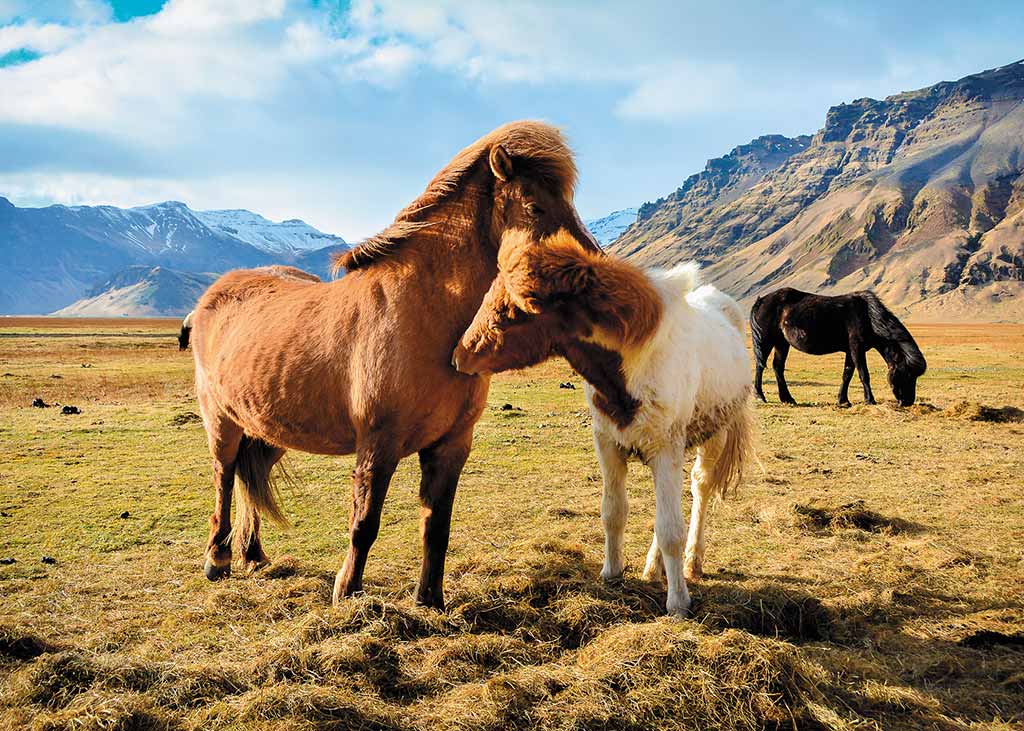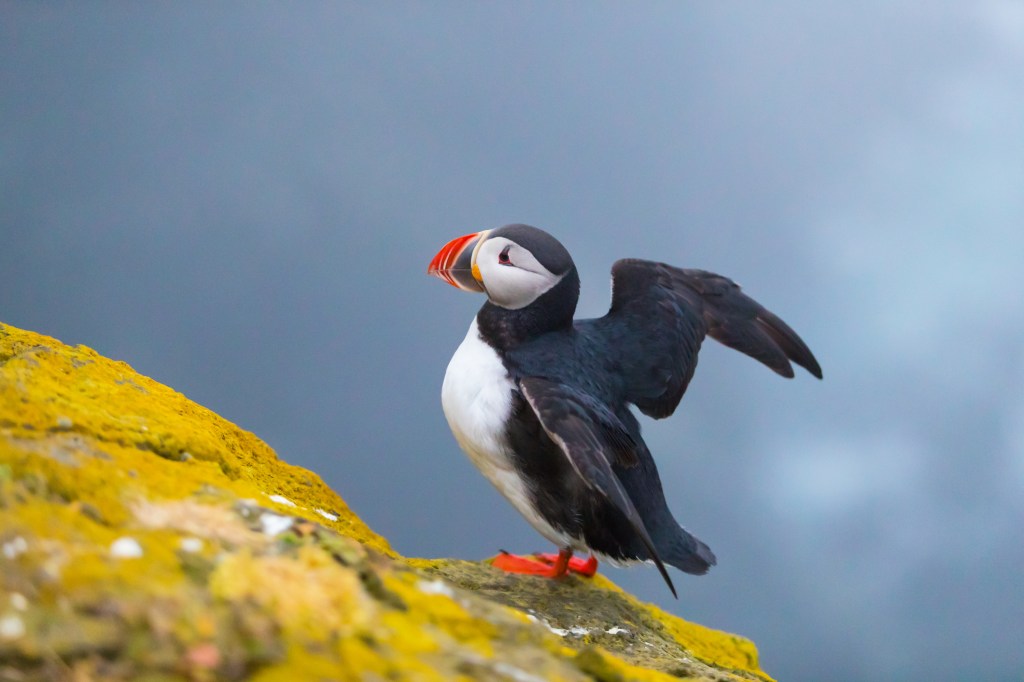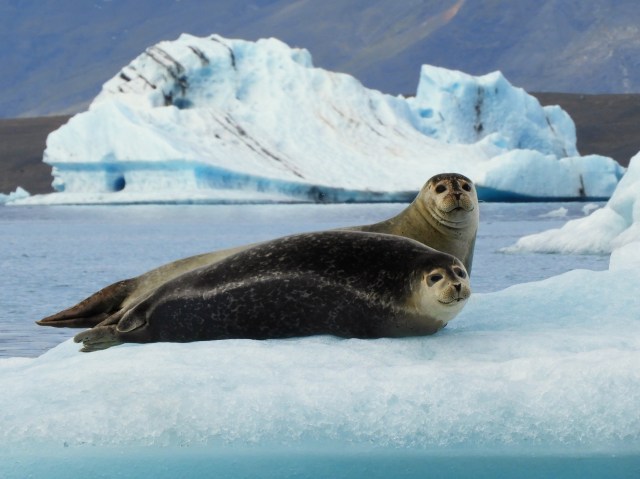Iceland’s Animals
Iceland may not be known for its land mammals—other than sheep, cows, horses, reindeer, and the arctic fox—but animals in the ocean and sky are varied and ample. Sheep, cows, and horses can be found in every region of the island, but reindeer are only found in East Iceland. There are no reptiles or amphibians on the island. The only animal indigenous to Iceland is the arctic fox.

Fish
Fish are the lifeblood of Iceland: They sustain its inhabitants and serve as the country’s biggest trade resource. The waters surrounding Iceland support cod, haddock, catfish, mussels, halibut, plaice, lumpfish, monkfish, skate, and Greenland shark. Native to Icelandic river waters are salmon, trout, and arctic char.
Seals
Several species of seals call Iceland home, with harbor seals and gray seals being the most common. There are seal-watching sites in the north of Iceland; at Hvammstangi, there’s a seal center that’s a museum, information center, and seal-watching enterprise. Harbor seals are more commonly seen because they spend more time on land, whereas gray seals prefer the ocean. Harp, ringed, hooded, and bearded seals are also spotted in Iceland, but these are rarer.
Whales
Whale-watching is a spectacular way to spend an afternoon in Iceland, and there are several species to see, depending on where you set out on your excursion. High season for whales is May-October, and 14 species of cetaceans have been seen off the coasts of the island: blue, fin, minke, pilot, humpback, sei, orca, sperm, bottlenose, beluga, and narwhal whales, as well as white-beaked dolphins, white-sided dolphins, and harbor porpoises. The best places for whale-watching are Reykjavík in the south, Snæfellsnes in the west, and Húsavík and Akureyri in the north.

Birds
Bird-watchers are delighted when they visit, as there are more than 300 species of birds in Iceland. The island is a stopover for birds migrating between North America and Europe, and common species are ravens, eider ducks, arctic terns, Iceland gulls, white gulls, black-headed gulls, skuas, white-tailed eagles, gannets, fulmars, kittiwakes, and oystercatchers.
The bird that has become synonymous with Iceland is the adorable puffin, with its black and white body, bright orange feet, and colorful red, blue, and orange beak. Puffins are remarkable swimmers and divers, able to dive underwater and surface with as many as 10 small fish in their beaks in under a minute. While exceptional in water, puffins are clumsy in flight and are known for their uneven landings on land. It’s part of their charm. Millions of puffins call Iceland home, although their numbers have dwindled over the years. It’s possible to see puffins during the summer in areas including the Westman Islands, Grímsey, and the Látrabjarg cliffs in the Westfjords. Puffins are not aggressive, and if you get too close, they will fly away.
Heading to Iceland?
Featured Post

Newsletter Signup
By clicking ‘Sign Up,’ I acknowledge that I have read and agree to Hachette Book Group’s Privacy Policy and Terms of Use
Pin It for Later


